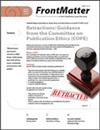两种同域蛛科(蛛亚目:蛛科)蛛网特征的差异表明它们在捕食策略上存在权衡
IF 0.9
3区 农林科学
Q3 ENTOMOLOGY
引用次数: 0
摘要
摘要球网的设计受到多种非生物因素(如风、可用空间)、生物因素(如猎物可用性、捕食)和物种特异性因素(如蜘蛛大小)的影响。因此,每个蜘蛛网的一些特征可以反映这些因素的综合作用。我们比较了两种同域分布的蜘蛛种类(Leucauge sp.,和L. argyra (Walckenaer, 1841), Tetragnathidae)的蜘蛛大小和网倾角在不同网段面积上的关系以及其他特征(如数量或半径)。Leucauge sp.比l.a argyra体型更小,在更大的倾角范围内构建更小的网。网纹的其他特征,如捕获面积和轮毂面积,但不包括黏附螺旋匝数和半径数,在银蛛网纹中也更大。这种倾斜度在Leucauge sp.蛛网中更大,但蛛网的不对称性在不同物种之间没有差异,但与其他织网动物的蛛网总面积呈负相关。每个物种的网络特征表明,银蛛优化了猎物的拦截,而狼蛛优化了大型猎物的拦截和保留。本文章由计算机程序翻译,如有差异,请以英文原文为准。
Differences in web features between two sympatric Leucauge species (Araneae: Tetragnathidae) suggest a trade-off in prey capture strategy
Abstract. The design of orb webs is affected by multiple abiotic (e.g., wind, available space), biotic (e.g., prey availability, predation), and species specific (e.g., spider size) factors. Thus, some features of each spider web are expected to reflect the combined effect of such factors. We compared the relationship of spider size and web inclination on the area of different sections of the orb web and other features (e.g., number or radii) between two sympatric Leucauge species (Leucauge sp., and L. argyra (Walckenaer, 1841), Tetragnathidae). Leucauge sp. was smaller and constructed smaller webs across a wider range of inclinations than L. argyra. Other features of the web, e.g., capture area, and hub area, but not the number of adhesive spiral turns and number of radii, were also larger in webs of L. argyra. The inclination was greater in webs of Leucauge sp., but the asymmetry of webs did not differ between species, though, it correlated negatively with the total area of the web of both species, as in other orb-weavers. The characteristics of each species' web suggest that L. argyra optimizes prey interception, while Leucauge sp. optimizes stopping and retention of large prey.
求助全文
通过发布文献求助,成功后即可免费获取论文全文。
去求助
来源期刊

Journal of Arachnology
生物-昆虫学
CiteScore
2.20
自引率
10.00%
发文量
34
审稿时长
>12 weeks
期刊介绍:
The Journal of Arachnology publishes scientific articles reporting novel and significant observations and data regarding any aspect of the biology of arachnid groups. Articles must be scientifically rigorous and report substantially new information.
 求助内容:
求助内容: 应助结果提醒方式:
应助结果提醒方式:


